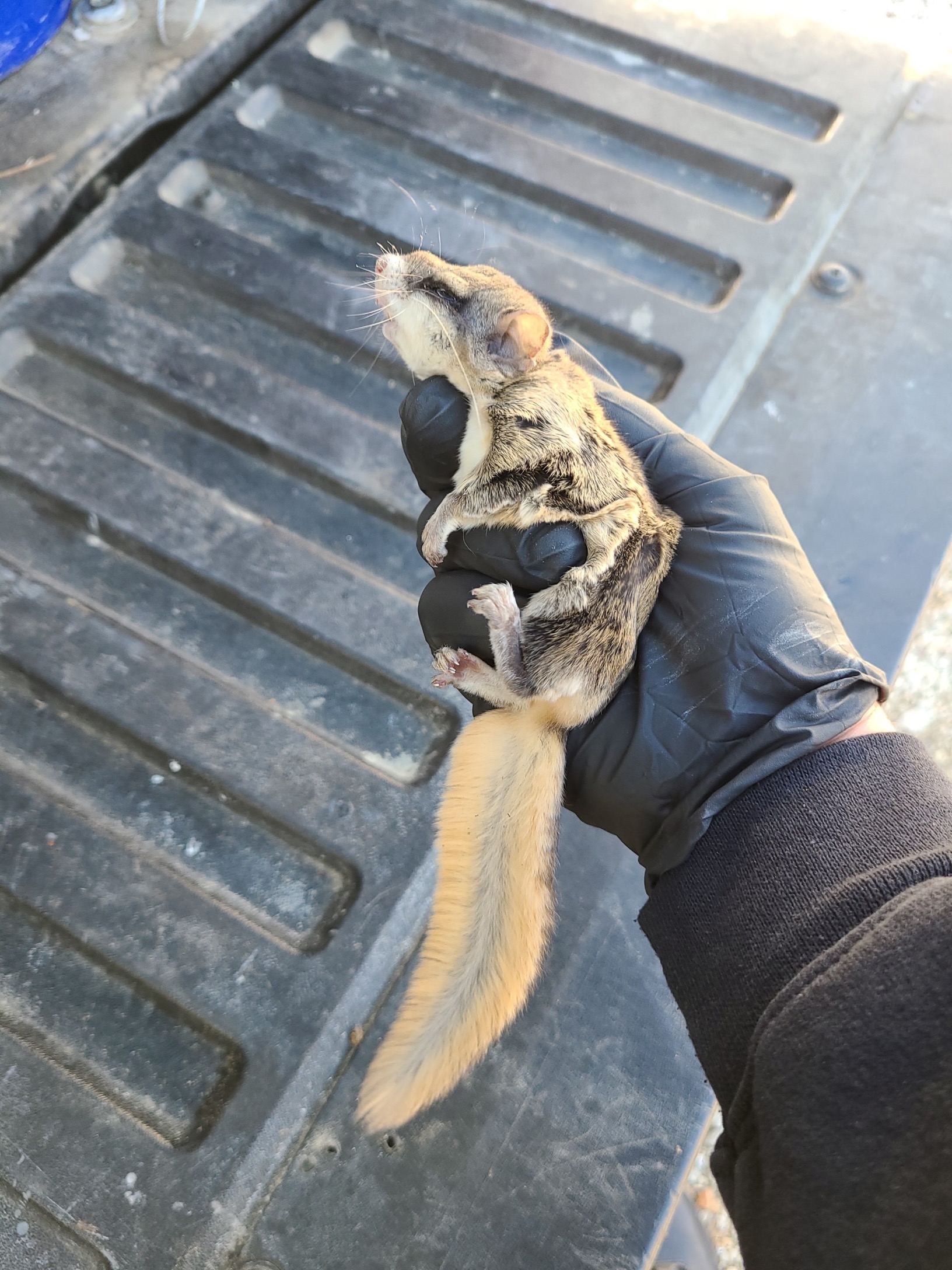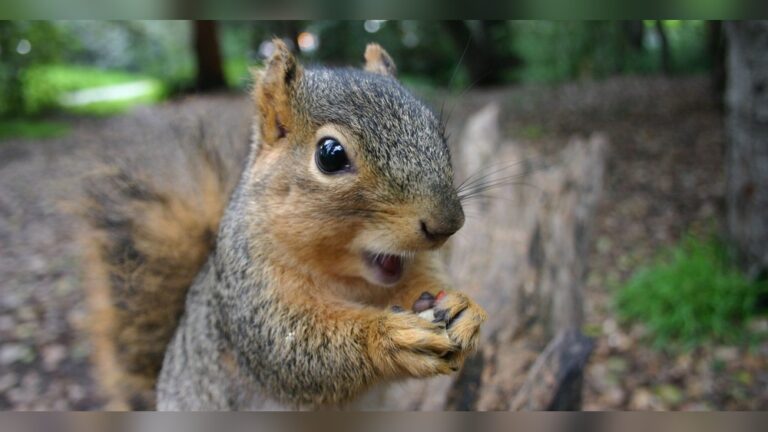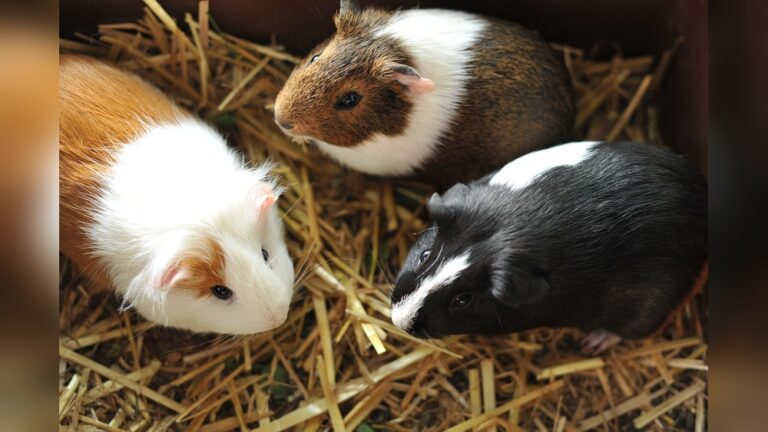Are Flying Squirrels Dangerous? Shocking Truth Revealed!
Have you ever spotted a flying squirrel gliding silently through the trees and wondered, “Are flying squirrels dangerous?” You’re not alone. These small, furry creatures might look cute and harmless, but there’s more to them than meets the eye.
Whether you’re curious about their behavior, worried about your safety, or want to know if they can cause damage around your home, this article will give you clear answers. Keep reading to discover the surprising truth about flying squirrels and what you really need to know to protect yourself and your family.
Flying Squirrel Basics
Flying squirrels are small mammals known for their unique ability to glide between trees. They are not true flyers but use a flap of skin to glide. These creatures live mostly in forests and are mostly active at night. Understanding their basics helps clear up any fears about their danger.
Physical Features
Flying squirrels have soft, thick fur that is usually gray or brown. Their large eyes help them see in the dark. They have a flap of skin called a patagium that stretches from their front to back legs. This flap acts like a parachute for gliding. Their tails are long and flat, helping them steer in the air. They are small, often about 10 inches long including the tail.
Habitat And Behavior
Flying squirrels live in wooded areas with many trees. They prefer forests with old trees that have holes for nests. These squirrels are nocturnal, meaning they are active at night. They glide from tree to tree to find food and avoid predators. Their diet includes nuts, fruits, insects, and bird eggs. They are shy and avoid humans, usually staying hidden in trees.

Credit: covenantwildlife.com
Myths About Flying Squirrels
Flying squirrels have sparked many stories and ideas over the years. Some of these stories are not true. These myths can make people think flying squirrels are dangerous. Clearing up these myths helps us understand these animals better.
Common Misconceptions
Many people think flying squirrels can fly like birds. They do not fly but glide using skin flaps. Another myth says flying squirrels attack humans. They are shy and avoid people. Some believe they carry diseases that spread easily. Flying squirrels rarely spread diseases to humans. These ideas make people fear them without reason.
Origins Of Myths
Old stories and movies often show flying squirrels as scary creatures. Their night activity makes them seem mysterious. People do not see them often, so they guess about their habits. Some myths come from confusing flying squirrels with other wild animals. Misunderstandings about their behavior also create false fears. Knowing the truth helps stop these myths from spreading.
Potential Dangers
Flying squirrels may look cute and harmless. Still, they can pose some risks to humans. Understanding these potential dangers helps you stay safe around them. This section covers the main concerns related to flying squirrels.
Bites And Scratches
Flying squirrels can bite or scratch if they feel scared. Their teeth and claws are sharp. A bite or scratch can cause pain and bleeding. Avoid touching or trying to hold a flying squirrel. If you get bitten or scratched, clean the wound well. Watch for signs of infection like redness or swelling.
Disease Transmission
Flying squirrels can carry diseases that affect humans. They may spread bacteria or viruses through bites or droppings. One common risk is the spread of parasites like fleas and ticks. These parasites can carry other illnesses. Always keep a safe distance from flying squirrels. Do not touch their nests or droppings. Wash your hands thoroughly if you come near them.
Interactions With Humans
Flying squirrels are mostly shy creatures that avoid humans. They live in trees and come out at night. Usually, people do not see them often. But sometimes, encounters do happen. Understanding these interactions helps keep both humans and squirrels safe.
When Encounters Happen
Flying squirrels may enter attics or sheds seeking shelter. They might appear near homes at night. Sometimes, they glide from tree to tree close to people. Rarely, they may feel threatened and act defensively. Most encounters are brief and cause no harm.
How To Stay Safe
Do not try to touch or catch a flying squirrel. Give them space to leave on their own. Seal any holes or openings around your home. Use lights or noise to gently encourage them away. If a squirrel seems sick or injured, contact animal control for help.
Flying Squirrels As Pets
Flying squirrels attract many pet lovers with their soft fur and big eyes. They look cute and fun to watch. People think they are easy pets because of their size. But owning a flying squirrel is not simple. They have special needs and habits that can be hard to meet. Understanding these needs helps decide if a flying squirrel is right for a home.
Risks Of Domestication
Flying squirrels can bite if scared or stressed. Their sharp teeth may cause injuries. They carry germs that can spread to humans. Stress from captivity can harm their health. They need space to glide and climb. Without enough room, they become restless and unhappy. Flying squirrels may also be noisy at night. This can disrupt sleep and daily life.
Care And Legal Issues
Flying squirrels require a special diet with nuts, fruits, and insects. They need a tall cage with branches to climb. Regular vet visits are important for their health. Many places have laws about owning wild animals. Permits may be needed to keep flying squirrels. Some regions ban them as pets completely. Research local rules before getting a flying squirrel.

Credit: www.trutechinc.com
Protecting Flying Squirrels
Protecting flying squirrels is important for nature and the balance of ecosystems. These small creatures play a key role in spreading seeds and helping forests grow. People should learn how to keep them safe and respect their homes. Understanding how to protect flying squirrels helps keep them healthy and around for future generations.
Conservation Efforts
Many groups work to protect flying squirrels and their habitats. They create safe areas where squirrels can live without harm. Scientists study flying squirrels to learn about their needs and behavior. This knowledge helps build better plans for their survival. Planting trees and keeping forests healthy also supports flying squirrel populations.
Respecting Wildlife
It is important to respect flying squirrels and other wild animals. Avoid touching or capturing them, as this can cause stress or injury. Keep pets away from flying squirrels to prevent harm. Observe these animals quietly from a distance. Respecting wildlife helps maintain a peaceful environment for all creatures.

Credit: worldclasswildliferemoval.com
How Smart Pets Lover Can Help You with Are Flying Squirrels Dangerous
Learning from Flying Squirrels: Safety and Respect Go Hand in Hand
When exploring whether flying squirrels are dangerous, it’s natural to feel curious yet cautious. Understanding their behavior and the myths surrounding them helps us appreciate these fascinating creatures without fear. For anyone interested in interactions with humans and the potential dangers, gaining practical knowledge is key. Observing flying squirrels in their natural habitat, for instance, teaches us about respecting wildlife boundaries and preventing unwanted encounters.
For families and pet lovers who may consider flying squirrels as pets, it’s vital to remember that responsible care starts with learning about their needs and risks. Smart Pets Lover encourages you to approach this with warmth and respect, just as you would with dogs, cats, or birds. If you’re ever unsure, connecting with local wildlife experts or veterinarians can provide personalized advice and peace of mind.
By blending curiosity with responsible action, you can enjoy the wonder of flying squirrels safely, deepening your connection to nature and enriching your journey as a caring pet parent.
Frequently Asked Questions
Are Flying Squirrels Harmful To Humans?
Flying squirrels are generally not harmful to humans. They are shy creatures and avoid contact. They rarely bite unless threatened. However, they can carry parasites, so avoid handling them directly.
Can Flying Squirrels Carry Diseases?
Yes, flying squirrels can carry diseases like leptospirosis and parasites. Though transmission to humans is rare, caution is advised. Avoid direct contact and keep your living spaces clean to prevent infestations.
Do Flying Squirrels Damage Homes?
Flying squirrels can cause minor damage by chewing wires and insulation. They often nest in attics or walls. Early detection and humane removal help prevent extensive property damage.
Are Flying Squirrels Aggressive Animals?
Flying squirrels are not aggressive. They are nocturnal and prefer escaping over attacking. Aggression usually occurs only if they feel cornered or threatened.
Conclusion
Flying squirrels are mostly harmless creatures. They rarely bite or attack humans. These animals prefer to avoid people and stay hidden. They can carry diseases, but the risk is very low. Watching them glide can be a fun experience. Respect their space and do not try to catch them.
Understanding flying squirrels helps reduce fear and myths. They are part of nature’s balance and deserve care. Stay calm if you see one nearby. Safety comes from knowledge and simple caution.







